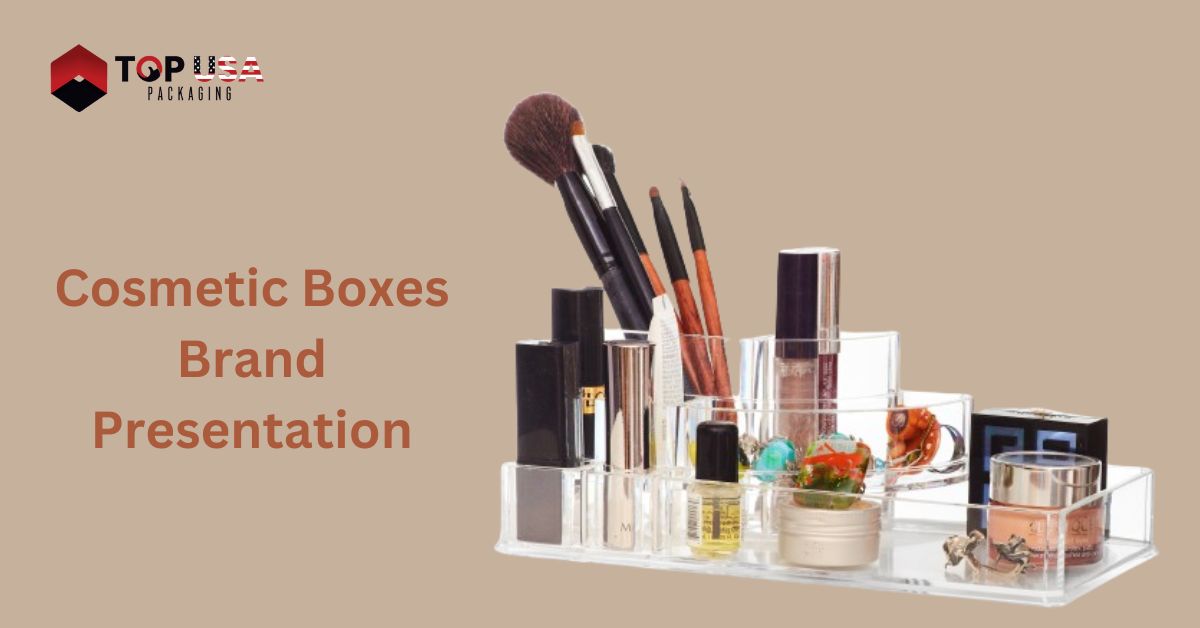Introduction to Cosmetic Boxes
In today’s competitive cosmetic industry, packaging plays a crucial role in attracting consumers and distinguishing brands from their competitors. Cosmetic boxes serve as more than just containers; they are a reflection of a brand’s identity, values, and commitment to quality. Let’s delve deeper into the world of cosmetic boxes and explore their significance, types, materials, design options, and more. Cosmetic boxes are essential containers that hold beauty products, serving as both protective packaging and branding tools.
Importance of Packaging in the Cosmetic Industry
Packaging serves as the first point of contact between consumers and cosmetic products. It not only protects the contents but also communicates the brand’s message and influences purchasing decisions. With an abundance of options available, consumers are drawn to aesthetically pleasing packaging that conveys quality and authenticity. Packaging is crucial in cosmetics, as it protects products and communicates brand identity, influencing consumer perceptions and purchasing decisions.
Types of Cosmetic Boxes
Primary Packaging
Cosmetic boxes primary packaging refers to the container that holds the actual cosmetic product, such as jars, bottles, tubes, and compacts. It directly touches the product and is essential for preserving its integrity and freshness. Primary packaging refers to the immediate container of cosmetic products, such as bottles, jars, and tubes, directly in contact with the contents.
Secondary Packaging
Secondary packaging includes boxes or cartons that contain and protect the primary packaging. It often serves as a canvas for branding and product information, enhancing the overall presentation of the cosmetic product.
Secondary packaging includes boxes or cartons that hold and protect the primary packaging, often serving as a canvas for branding.
Tertiary Packaging
Tertiary packaging is used for transportation and bulk handling of cosmetic products. It ensures the safe delivery of products from manufacturers to retailers and ultimately to consumers. Tertiary packaging is used for transportation and bulk handling, ensuring safe delivery of cosmetic products from manufacturers to retailers.
Materials Used in Cosmetic Boxes
Cosmetic boxes can be crafted from various materials, each offering unique benefits and aesthetic appeal.
Cardboard
Cardboard is a popular choice for cosmetic boxes due to its versatility, affordability, and eco-friendliness. It can be easily customized and is suitable for both primary and secondary packaging.
Paperboard
Paperboard is lightweight yet sturdy, making it ideal for luxury cosmetic packaging. It provides a smooth surface for high-quality printing and embossing, enhancing brand visibility on retail shelves. Paperboard is a lightweight, sturdy material often used for packaging purposes.
Plastic
Plastic packaging offers durability and flexibility, allowing for innovative designs and shapes. It is commonly used for primary packaging such as bottles and jars, offering convenience and portability to consumers. Plastic is a versatile material used in various industries for its durability and flexibility.
Glass
Glass packaging exudes luxury and sophistication, making it a preferred choice for premium cosmetic brands. It preserves the integrity of formulations and is fully recyclable, appealing to eco-conscious consumers.
If you want to know more information about foundation boxes visit TopUSAPackaging.
Design and Customization Options
Custom cosmetic boxes offer endless possibilities for branding and creative expression. From bold graphics to unique shapes and sizes, brands can tailor packaging to align with their vision and target audience. Design and customization options allow tailoring products to specific preferences, enhancing user experience and personalizing items to individual tastes.
Benefits of Custom Cosmetic Boxes
Custom cosmetic boxes offer numerous benefits beyond product protection. They enhance brand recognition, differentiate products from competitors, and serve as powerful marketing tools to attract and retain customers. Cosmetic boxes branding offer opportunities, product protection, eco-friendliness, and enhanced aesthetics, driving sales and fostering customer loyalty.
Sustainable Packaging Trends in the Cosmetic Industry
With increasing awareness of environmental issues, sustainable packaging has become a priority for cosmetic brands. Biodegradable materials, minimalist designs, and refillable packaging options are gaining traction as consumers seek eco-friendly alternatives.
How to Choose the Right Cosmetic Box Supplier
Selecting the right cosmetic box supplier is crucial for ensuring quality, reliability, and cost-effectiveness. Factors to consider include expertise, manufacturing capabilities, material sourcing, and ethical practices. Consider supplier reputation, quality of materials, customization options, pricing, and customer service to select the ideal cosmetic box supplier.
Cost Considerations in Cosmetic Packaging
While custom packaging can enhance brand image, it’s essential to balance aesthetics with cost considerations. Working closely with suppliers and optimizing packaging designs can help minimize expenses without compromising quality. When budgeting for cosmetic packaging, consider material costs, design complexity, printing techniques, and shipping expenses to optimize costs effectively.
Case Studies: Successful Cosmetic Brands and Their Packaging Strategies
Examining the packaging strategies of successful cosmetic brands provides valuable insights into industry trends, consumer preferences, and effective branding techniques.
Future Outlook: Innovations in Cosmetic Packaging
Technological advancements and evolving consumer preferences continue to drive innovation in cosmetic packaging. From smart packaging solutions to sustainable materials, the future holds exciting possibilities for the industry. The future of cosmetic packaging may include sustainable materials, smart packaging technologies, customizable designs, and eco-friendly innovations.
Tips for Designing Eye-Catching Cosmetic Boxes
Designing eye-catching cosmetic boxes requires creativity, attention to detail, and a deep understanding of brand identity and target audience. Incorporating vibrant colors, tactile finishes, and interactive elements can captivate consumers and leave a lasting impression.
Regulations and Compliance in Cosmetic Packaging
Compliance with regulatory standards is essential to ensure the safety and integrity of cosmetic products. Brands must adhere to labeling requirements, ingredient restrictions, and packaging guidelines to maintain consumer trust and avoid legal repercussions.
Impact of E-Commerce on Cosmetic Packaging
The rise of e-commerce has reshaped the cosmetic packaging landscape, with brands focusing on practicality, durability, and aesthetics for online retail environments. Packaging designs must adapt to meet the unique challenges of shipping and handling while maintaining brand consistency and appeal. E-commerce transforms cosmetic packaging, emphasizing durability, sustainability, and digital engagement to meet online retail demands and consumer expectations.
Conclusion
In conclusion, e-commerce reshapes cosmetic packaging, driving innovation, sustainability, and digital interaction to meet evolving consumer needs. Cosmetic boxes play a pivotal role in shaping consumer perceptions, enhancing brand value, and driving sales in the competitive beauty industry. By prioritizing quality, innovation, and sustainability, brands can create packaging that resonates with consumers and reinforces their commitment to excellence.



